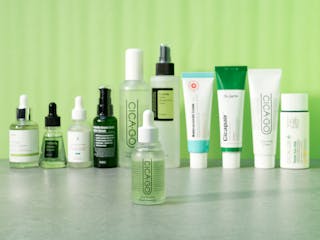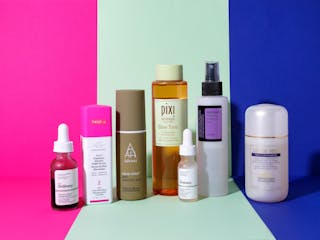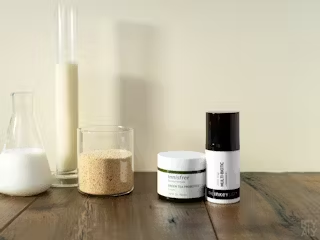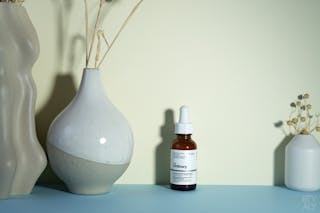At a glance
Your complete guide to ceramides, the ultimate allies if your skin barrier is suffering, but not only! How do they work, how to use them and how to optimise them in your skincare routine for maximum results? I’ll tell you all about them, and I’ll also share my recommendations for ceramide based products!
It’s cold, the air is too dry indoors, it’s windy outside – in short, it’s winter and your skin is suffering. It’s time to dig out your favourite skin barrier repair products! Why not focus on their star ingredients, the pros of repair and comfort? Today, we’re taking a closer look at ceramides!
Because ceramides are crucial to the healthy balance of the epidermis!
Naturally present in the skin, ceramides strengthen the skin’s protective barrier to shield it from external aggression. They’re a bit like your own little personal skin sentinels!
Unfortunately, the level of natural ceramides in the skin decreases with age. Using a ceramide-based skincare product helps to rebuild the skin’s defences and protect it more effectively!
Ceramides are well known to dry skin in general, because until recently, formulas containing them were usually intended only for them. They were mainly found in the form of rich, emollient creams or almost oil-based serums. Clearly, we weren’t talking about lightweight, airy textures…
I still remember Elisabeth Arden’s ceramide capsules, launched in 1990, which were still a big hit with customers with dry skin when I was working in a beauty counter 10 years later! The brand still sells them, they’re one of their cult products.
That’s why I didn’t use them for a long time; with my combination skin, these ingredients didn’t seem appropriate for my skin needs…
But two things have recently changed!
Firstly, my skin, which has become drier with age and, above all, with the diligent use of retinoids (at the moment, I’m even using tretinoin, on prescription). And also, the textures of ceramide products have changed dramatically! Pretty much all skin types now have access to them, because unfortunately anyone can alter their skin barrier because of certain circumstances, and needs to use a repairing product from time to time. 😉
And if I tell you that you can now find formulas based on ceramides which are completely liquid essences, and which don’t leave a greasy finish on the skin, would you believe me? 😉
So let’s delve into the world of ceramides to better understand how they work and why they’re good for all skin types. And at the end of the article, I’ll share with you a selection of products recently launched on the market that caught my attention, and which use ceramides in their formulas!
 Ingredients
Focus on: retinol
Over the past year or two, retinol made a huge comeback in our skin care products. And this is only the beginning, you can expect to be inundated in the coming months! This ingredient is supposed to be the most effective for a true, proven and recognized anti-aging action. But sometimes sensitizing, it can also frighten beginners. Let’s take a closer look at retinol, or rather the family of retinoids!
Read more
Ingredients
Focus on: retinol
Over the past year or two, retinol made a huge comeback in our skin care products. And this is only the beginning, you can expect to be inundated in the coming months! This ingredient is supposed to be the most effective for a true, proven and recognized anti-aging action. But sometimes sensitizing, it can also frighten beginners. Let’s take a closer look at retinol, or rather the family of retinoids!
Read more
What are ceramides?
The role of ceramides:
To put it simply, ceramides are the best allies for healthy, comfortable skin. Think of them as the guardians of your skin barrier, working in harmony with skin cells to maintain an ideal balance for the comfort and protection it needs to provide.
These natural fatty substances play a crucial role in keeping the skin hydrated and protecting it from external aggressors. In other words, ceramides are the defenders of your epidermis, ensuring a strong, resilient skin barrier.
The structure of ceramides:
Now, if we go into more detail about the structure of these ingredients, ceramides are quite simply fats, or lipids, that are part of the skin’s composition. In short, they’re a kind of oily wax.
Did you know that newborn babies, especially premature ones, can actually be born with a sort of a wax layer on their skin that prevents them from losing too much moisture? This oily film, called vernix caseosa, forms during the eighth month of pregnancy and remains mainly in the skin folds after birth. It protects the skin of the foetus from contact with the amniotic fluid. And this vernix caseoasa consists mainly of ceramides!
Ceramides present in the skin represent around 50% of the total weight of lipids in the epidermis. Together with free fatty acids and cholesterol, ceramides form a hydrophilic extracellular lipid structure, essential for the skin’s permeability barrier function.
Ceramides, identified as sphingosine ceramide lipids, make a significant contribution to preventing transepidermal water loss (or TEWL).
If I were to make a building comparison, I could say that ceramides are a bit like mortar, helping the bricks of a wall to stay in place (in this case, the bricks would be the skin cells, so to speak). This mortar prevents the brick wall from collapsing and makes it more resistant to external aggression.
Ceramides do the same thing in the skin, helping it to be more robust by preventing water loss and keeping it more supple and hydrated.
These fatty molecules form a natural lipid barrier, acting as a protective shield against external elements. Ceramides are therefore truly the key to a balanced skin barrier and optimal, long-lasting hydration.
Ceramides’ skin benefits:
Ceramides are not just guardians of a better protected skin, they also have real repairing power. They work on the skin’s surface as well as on the inside!
Ceramides play a significant role in improving skin texture. By acting as natural moisturisers, they contribute to smoother skin to the touch. Dehydrated, dry skin can have a tendency to become rough and even more lined. Adding ceramides to your skincare routine helps to restore the skin’s suppleness and softness.
For those concerned about skin redness, ceramides also have soothing properties. Their impact is visible in the reduction of redness, giving the skin a more even appearance. Very interesting for sensitive skin!
In terms of barrier function, as we saw above, ceramides strengthen the skin’s resistance to external aggression. This means better protection against environmental factors.
And this also applies to skin that has been damaged, either by particular climatic conditions (wind, cold, air conditioning, very hard water, etc.) or a treatment that has been too harsh. If you use retinoids and/or exfoliating acids, ceramides are an undeniable asset for keeping your skin more comfortable and enjoying the benefits of your treatment!
In short, incorporating products containing ceramides into your routine can contribute to smoother, soothed and better protected skin. And as we’ll see straight away, these ingredients can be beneficial for all skin types, not just dry, sensitive skin as you’d normally assume…
Ceramides and skin types:
Ceramides are clearly versatile players in the skincare field, offering benefits suited to a variety of skin types, and not just dry skin, as is often commonly believed.
Indeed, at first glance, you wouldn’t think that ceramides would be suitable for combination to oily skin. However, for oily skin, these lipid molecules help to balance sebum production, promoting longer-lasting hydration without causing excessive sebum production.
Furthermore, when climatic conditions are extreme, such as in winter with its cold and harsh winds, all skin types can need a comfort boost, not just dry skin.
And now there are more and more ceramide-based products with lighter textures, suitable for these skin types who want something that might seem irreconcilable: comfort without greasiness!
Dry skin clearly finds an ally in ceramides, which helps to strengthen its easily damaged skin barrier and also prevent the dehydration it regularly experiences.
Many products with rich, emollient textures, much appreciated by dry skin, contain ceramides, and there’s quite a wide choice in the market!
Finally, when it comes to sensitive skin, ceramides help to soothe and strengthen skin resilience, minimising unwanted reactions. Their ability to restore and maintain the skin’s natural balance is a real asset for such easily irritated skin.
And here again, depending on skin type and personal preference, you can now find ceramide products with textures to suit everyone’s needs!
How to recognize ceramides in your products’ ingredients list?
Let’s start by listing the different types of ceramides! (Source: The Beauty Brains blog)
“Ceramide: A waxy lipid that is occurs naturally in skin. It’s made by combining combine a fatty acid with a sphingoid base.
Phytoceramide: A ceramide made with a phytosphingosine (a special type of sphingosine found in yeast, plants and some mammalian tissues. Don’t get tricked by this because “Phyto” is a buzz word for made from plants so this sounds like a cool, green ingredient. In reality its sourced from yeast.)
Pseudo-ceramide: A lipid that has similar properties to a ceramide but which has a different structure. For example, Ceramide E is a pseudo-ceramide. Another example is Arachamide MEA. Pseudo-ceramides may be naturally occurring but typically are made synthetically.
Synthetic ceramide: A lab-created version of a ceramide found in nature.
For the most part, ceramides used in skin care are synthetic (whether they are true ceramides or pseudoceramides.) Ceramides can be sourced naturally but they are present at only low concentrations in plants and animals so naturally derived ceramides are expensive. And besides, based on what we’ve seen, it doesn’t matter if the ceramide is natural or synthetic as long as it has the right structure.
Here are the different names of ceramides you can find in an INCI list:
– Ceramide 1 = Ceramide EOS
– Ceramide 2 = Ceramide NS = N-stearoyl sphinganine
– Ceramide 3 = Ceramide NP = N-stearoyl phytosphingosine
– Ceramide 4 = Ceramide EOH
– Ceramide 5 = Ceramide AS
– Ceramide 6 = Ceramide AP = α-hydroxy-N-stearoylphytosphingosine
– Ceramide 6 II = Caproyl sphingosine
– Ceramide 7 = Ceramide AH
– Ceramide 8 = Ceramide NH
– Ceramide 9 = Ceramide EOP
– Ceramide E = Cetyl-PG Hydroxyethyl Palmitamide and Hexadecanamide.”
How to add ceramides in your skincare routine?
It couldn’t be simpler: ceramides can be added to your routine at any step!
Ceramides work well with all other ingredients and, unlike other active skincare ingredients, there’s no risk of overdoing it with ceramides.
You can use a ceramide-rich cleanser, a serum containing ceramides and a ceramide-based moisturiser. There’s no risk of irritation, just comfort 😉
Here’s a small selection of ceramide-based products that I’ve tried recently or that have caught my eye!
A few recent products with ceramides:
I’ve actually been trying out a lot of ceramide-based products recently! Well, to be fair, I’ve been using these ingredients for a little while now (see all my reviews of ceramide products here), but over the last two or three years they’ve really become a regular part of my routine. And given that the trend is all about ‘skin barrier repairing’ products, there are more and more of them on the market, and with really great textures!
For the selection that follows, I haven’t necessarily taken the time to do a detailed review of each one, but I still want to give you a quick overview here, so that you can find them all in the same place.
I’ still testing some of them, and some I haven’t even tried yet, so my more detailed reviews will probably come later, but I can still tell you why I’ve chosen to mention them, it might come in handy!
Links to buy these products are in the text of the product description. 🙂
Essences:
One of my favourite formulas for ceramide products is essences! Milky and cushiony, they provide immediate comfort without heaviness. I love using them whenever my skin feels a little tight, and I add them to my routine in the morning and/or evening as soon as I feel the need. I use them at the beginning of my routine, just before my serums. 🙂
I already know the previous version of the but recently, I tried its reformulated version, and it didn’t disappoint!
In my experience, the current formula is less ‘heavy’ than the previous one (my review here if you’re curious). It’s lighter on the skin and doesn’t feel greasy, but it’s still quite emollient and, above all, it keeps my skin comfortable all day long!
The formula contains a selection of interesting ingredients: a combination of ceramides and peptides for comfort and hydration, and white tea leaf rich in amino acids for antioxidants and soothing, all blended using a technology exclusive to the brand: Micro Blending Technology. This technology gives the formula more stability and allows the ingredients to penetrate the skin more easily.
The product concept has been simplified compared to the previous version; here, it’s an essence, not a product that can replace a moisturiser, but honestly, in practice, for me with combination skin, it just works better!
I’ve been using it for a few months now, as part of my morning routine, and it keeps my skin feeling comfortable for a long time, with no greasy effect, which I particularly appreciate during the day! In short, for me, it’s a great reformulation. 🙂
I’d heard great things about the so I wanted to try it out a few months ago, when Hailey Bieber’s brand became more accessible (they now deliver in a few countries, by the way!)
It’s exactly the same principle as the Laneige Essence, a moisturising and nourishing liquid that doesn’t feel ‘heavy’ on the skin. The formula contains a trio of ceramides, beta glucan for hydrating and soothing properties, hydrating hyaluronic acid and a combo of zinc, magnesium and copper for a calming, anti-oxidant effect!
It looks really interesting on paper, and I have to admit that I find it effective on my skin, but unfortunately I don’t find it very pleasant to use… Its texture is a bit strange, it tends to ‘cling’ a bit to the skin when you massage it in, it’s not a really silky product. And it smells a bit strange, a bit like plastic or chemicals. I’m nitpicking, but I have to admit that if I have to choose between this Rhode product and the Laneige, there’s no contest. Laneige wins, because Koreans do it better, as usual. 🤪
Serums:
These ceramides-based serums are often more repairing, with a slightly richer texture, similar to emulsions (= sort of very liquid moisturising lotions). But the two I’m about to tell you about aren’t greasy and are suitable for all skin types. I use them morning and/or evening, and usually towards the end of my routine, just before my moisturiser.
*: gifted by the brand, then repurchased.
I’m already on my second bottle of so it’s about time I told you all about it!
The famous The Ordinary pink serum! And probably the most complete product from brand.
As we know, The Ordinary usually makes products based on one or even two ingredients at most. But here, the formula is clearly more complex, addressing a range of issues for sensitive and/or sensitised skin. This pink serum contains ceramides, but not only! There’s also soothing and antioxidant Centella Asiatica, soothing, purifying and antioxidant niacinamide, repairing vitamin B12 (which gives the product its pink colour), soothing bisabolol… and the list goes on! Such an interesting formula.
It’s a fairly soothing serum, with a creamy texture that’s not at all heavy on the skin. I was able to use it in the morning last summer, to give you context! It absorbs really well, leaving the skin soothed and repaired over time. If your skin is very dry, it probably won’t be enough if you’re looking for a lot of comfort; but combined with a more emollient cream, it’ll be perfect!
It’s clearly a product I can see myself repurchasing regularly in the future!
A Korean version of a ceramide serum is the which I’m currently using in my morning routine!
This serum is an emulsion, so it’s a bit creamier than The Ordinary serum mentioned above. It’s really an ideal option for someone like me who wants more comfort and a really emollient product, without feeling too greasy! It restores softness to the skin and soothes well, but without being greasy at all.
As well as ceramides, the formula includes soothing Centella Asiatica, repairing and soothing plant squalane, and seven types of peptides for an anti-ageing boost. It’s a pretty good formula!
This serum is great for boosting your routine in winter, or when your skin is tight or sensitive. It reminds me of the AMPLE:N Ceramide Shot Ampoule I told you about last year. I’d say the texture is a little richer, but it’s really a slight difference!
Moisturizers:
This is where ceramides are typically found in skincare products. But I’d say that for some time now, there have been ceramide-based moisturisers that are lighter in texture and can work on all skin types. They can even be used as day moisturisers, whereas until now, ceramides were mainly found in rich night moisturisers!
This is precisely the case with the which was launched a few months ago.
This is a reformulation of an existing product. I didn’t get a chance to test the old version, but I tried this one! The formula is based around ceramides, but it also contains an anti-ageing peptide and watermelon seed oil to strengthen the skin barrier.
I have to admit that I tested it at a time when my skin was very sensitised, as a night cream, and it wasn’t enough to give me back the comfort I needed. I had to add my favourite, the Omega Complex serum, for it to make a real difference to my skin. However, I’ve tried using it during the day since then, and I much prefer it used that way!
As it’s not heavy at all, my skin feels comfortable during the day without feeling greasy, and I can wear makeup over it with no problem. So perhaps if your skin is sensitive and oilier than mine, it would be more suitable as a night cream. 😉
A cream that will suit dry skin, or those who prefer a richer texture, it’s the , without any doubt!
Clearly here, this isn’t about lightweight texture at all! If you want nutrition, comfort, real moisture and emolliency, you’ve come to the right place! The formula contains natural moisturising factors (NMF), phytoceramides and skin mimetic lipids to rebuild the skin’s lipid barrier!
For me, it’s a real comforting night cream, for when my skin feels really tight or when I’m exposed to more extreme weather conditions. I’ll definitely be using it more in winter! (And more when I’m travelling, because in Dubai, temperatures rarely drop below 17 degrees Celsius lol). And as usual with The Ordinary, though, it’s great value for money!
A new product, released just a few weeks ago in the United States and Korea, is the which is a reformulation of the cult Korean brand Belif’s moisturising cream for dry skin!
This is the first time that Belif has reformulated its bestseller, so it’s quite the event, especially when you consider that most Korean brands reformulate their (cult or not) products about every 5 minutes. 😅
I mentioned the gel cream version of this brand (Aqua Bomb, in this article: Five moisturizing gel-creams for summer) and it’s also a bestseller for the brand, but the True Cream version is probably the more popular of the two. I tried the old version and really liked it too, but I have to admit that so far it’s mainly my (dry skin) husband who’s used it.
But I’m far too receptive to marketing and new products, as we all know! So if someone tells me that this new True Cream is based on ceramides, peptides and squalane, and that on top of that it promises to repair the skin barrier in two days, I’m very tempted. Especially if it’s a product I already liked, I can’t help thinking that the reformulated version will be better!
I know in advance that the sensorial aspect will be great, as the brand always makes super-pleasant textures and products with an amazing aromatic fragrance (if you only use fragrance-free products, Belif won’t probably be for you).
I’ll keep you posted, I’ve got a few night creams to finish before I start this one, but I think it’s looking very promising!
SOS healing balm:
When the skin feels bad, when it feels itchy, when it peels, when it gets dry patches, it’s time to pull out the big guns! And when it comes to skincare, that means SOS healing balms.
A true staple, the , especially if you have a very sensitive skin!
I imagine that with the trend of slugging, the technique of sealing your skincare routine with a layer of a greasy product to lock in all the moisture applied underneath, this CeraVe ointment is definitely a hit product right now!
I only discovered it recently, even if it has been around forever.
And this healing ointment doesn’t just contain occlusive petrolatum, it also contains a trio of ceramides and moisturising hyaluronic acid. The brand talks about a product that is occlusive (= that acts like a protective layer on the skin) and non-comedogenic, and having tested it myself with my acne-prone skin, I find it to be true!
I know that the myth of petrolatum being comedogenic is still very much alive in many people’s heads (and honestly, I thought so too until very recently), but it’s time to set the record straight! Petrolatum is not comedogenic, but of course, given its very emollient texture, it’s not suitable for all situations. It should only be used in situations where the skin really needs an ultra-rich, fairly greasy product. If you already have oily skin that is quite shiny all the time, and doesn’t feel tight, you don’t use petrolatum based products. It wouldn’t make sense! 🙂
Personally, I don’t use this CeraVe ointment for slugging all over my face (my skin isn’t dry enough for that), but however, it has completely revolutionised my skin with the use of tretinoin! Let me explain: I’ve been using tretinoin for almost a year now, and even though my skin has adapted well overall, I still have trouble using it on the area around my mouth. There’s nothing I can do, the area is too sensitive for me to use any retinoid on it. It always ends up with small breakouts, and it has been like that for years. Around the eyes, everything’s fine, I can use any retinoid, but around the mouth, it just won’t do.
I found the perfect solution a few months ago, which has enabled me to continue using my tretinoin and significantly reduce the irritation!
Basically I use this CeraVe Advanced Repair Ointment as a sort of shield before applying my tretinoin, just on the sensitive area around my mouth. And only then do I apply my tretinoin to the rest of my face. And it works like a charm, I hardly ever have any irritation in this area, which was always a problem for me!
Incidentally, I also use this CeraVe Advanced Repair Ointment on my drier skin areas (given the size of the tube, it would be wrong not to!), such as around my nails, cuticles, heels, elbows, knees, etc.
In short, it’s a fantastic, super versatile product. And I totally get the hype! 🙂
In conclusion:
Ceramides are definitely a skin ally in many situations! In your winter routine, if you’ve overdone it with acids or retinoids, or if you’re simply looking for a more comfortable product, ceramides are an excellent option!
At the moment, mimetic ingredients (= ingredients that are naturally present in the skin and which the skin therefore recognises and tolerates very well) are very trendy, and this is probably why ceramides are so popular. Or maybe it’s simply because they’re incredibly effective ingredients!
And if they’re also suitable for all skin types, what’s not to love, really?
What about you, do you use these ingredients in your routine? And do you have any favourite ceramide-based products?
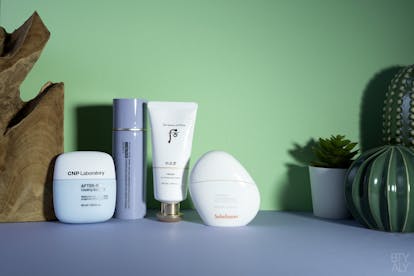


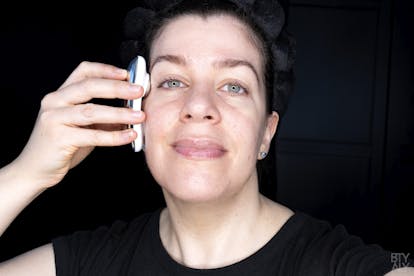
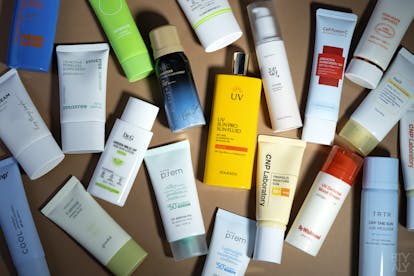

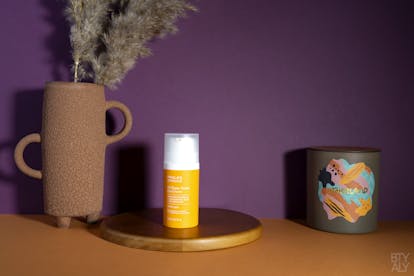
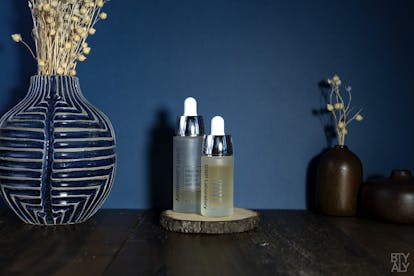
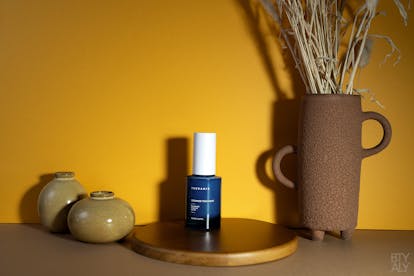
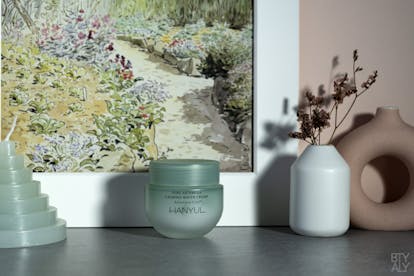

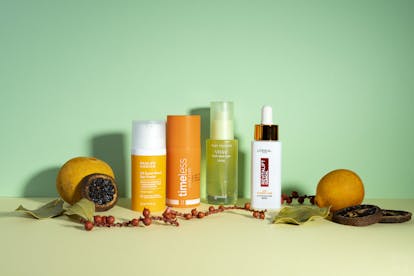

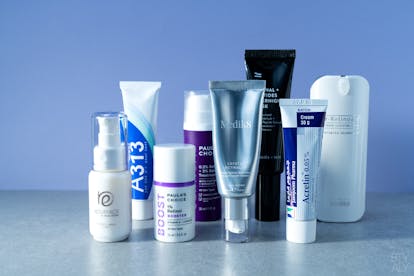
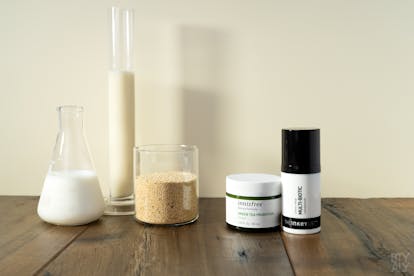

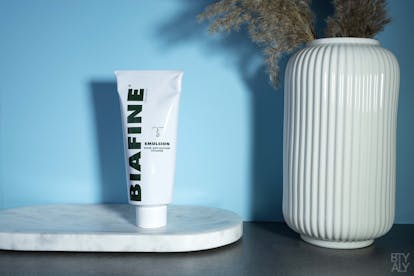

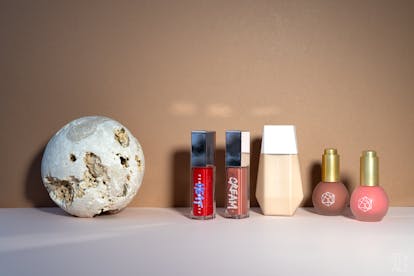
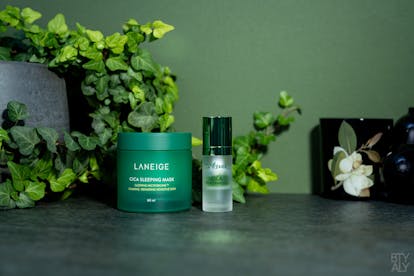


 Newsletter
Newsletter














